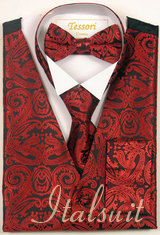

Bow ties, associated with either New England idyllic preppy culture or the culture of the white aristocrats.
On a formal tuxedo wear, bowtie is a factor that completes the wardrobe. A bowtie is a ribbon tied around the collar in a symmetrical twist in two opposite ends that forms a loop. Various bow ties are clip on and sold as a set, though others preferred the traditional knot especially those that are knowledgeable on the knot techniques, it consists of a strip of cloth made by either polyester, silk or cotton, and wool which are rather not frequent. A bow tie as part of a tuxedo constituent does express a lot in a wearer’s personality, as it carries your personality and life style. Worn as costumes in stage plays or magic shows, mentioning the funny colored bow ties for clowns, formal events that are widely seen in popular culture as items of sophistication, also associated with particular profession such as architects, attorneys, university professors and politicians over a nice suit or tuxedos, though neckties proves most prominent in today’s society.
A bow tie represents somewhat of an irony; even so, it still considers a classy ingredient on a formal wardrobe, especially with a dress code noted as” black tie” attire, which highly requires such piece.
During the Prussian wars in 17th century the Croats (Croatian armed forces) uses scarf around their neck. This serves as an alternative for collars that holds the shirt opening. The biggest emigration groups live in Western Europe, mostly Germany, Italy, Sweden, France, Great Britain, etc. On other continents, the biggest Croatian community lives in the United States of America, Canada, Chile and Argentina. Important Croatian communities are in Australia, New Zealand and South Africa. In addition, to go over the main point, a bow tie was originated among Croatian mercenaries centuries ago.
Bow ties were adopted in upper classes in France, then a leader in fashion, and continuously increase in the 18th and 19th century. It is uncertain whether the “cravat” (derived from French for Croat) then progressed into the bow tie and necktie. In our today’s fashion, it has now known, for it is a classy piece in our men’s wardrobe.